If you are traveling to South America, and visiting Colombia, then you may be wondering what to eat in Colombia. Then you’re in luck because this article will give you a great starting point! I tried to make this guide to Colombian food as complete as possible, with almost everything I tried, my absolute most favorite traditional Colombian dishes, what I like, what I love, and a few more odds and ends based on more than a few years of living and traveling through Colombia.
Whenever you visit a country for the first time one of the biggest questions that you have is what to eat, I know that’s part of the mystery and fun of traveling, at least for me. When you’re abroad it can be a big adventure just going out for lunch when you have no idea what’s good and on the menu. As a baseline, it helps to know what are the most traditional, most popular, most exotic, or what dishes are most popular among locals.
After years of exploring Colombian cuisine, primarily within Medellin, but also eating my way from one end of the country to the other — from the Caribbean Coast to Mocoa — I’m pleased to share this guide about what to eat in Colombia! I’ve also got to thank my Colombian girlfriend, Andrea, and her family for helping me explore all the delicious things to be tried.
What to Eat in Colombia
Colombia cuisine doesn’t really have a big reputation internationally, and some travelers say that Colombian food tends to be bland and uninspiring. But I don’t think that’s really fair, since there are so many things to try across the country with a great deal of variety, and I can’t really understand why its cuisine is not more renowned at the international level. If you are an adventurous traveler, then Colombia is a perfect destination, and Colombian food is just another reason to explore and love this country even more. At least in my eyes!
And Colombian food is also pretty incredibly cheap — you can eat very well on a budget here, unlike some other countries where you’ve got to stick to bread and cheese. Even if you’re on a budget, you won’t be left wondering what to eat in Colombia because there are plenty of cheap options.
Beware though, a lot of the best Colombian food isn’t exactly healthy (the best foods never are) so you can easily gain a few pounds while you walk around the city streets and try the many different dishes, so don’t miss my article on staying in shape while traveling, if you don’t want to return home fat like a Fernando Botero sculpture.
This is the most complete single article that you will find online about Colombian food, ranging from the most traditional Colombian food to the best street food in Colombia and much more.
Without further ado, here is my guide on what to eat in Colombia, to keep you full and happy while you visit.
Empanadas
They are delicious, definitely among my favorites! Empanadas are a fried tortilla wraps made of corn flour that are stuffed with a potato mixture and ground beef, seasoned with onions and tomato.
Those are the classic empanadas, however, you can find them with many different variations in their filling, for example you can replace the meat with chicken, replace the potato with rice or even find them without any meat.
In fact, in some places, they have created more elaborate combinations with other ingredients, such as cheese, sausage, “Hawaiian,” Chicharron, many other endless options.
So if you see empanadas on the street and you decide to try them, it is best to ask what they have inside. Although they are almost always deep fried goodness. In some places they offer them with hogao (tomato and onion mix that isn’t spicy), aji (which is spicy), or even lemon, so you can top off your empanada.
Empanadas are quite simply the best street food in Colombia, readily available, super tasty, and very cheap! On those rainy evenings where I’m asking myself about what to eat in Colombia, I often head out to the corner empanada stand and grab a few to go.
Hogao
Speaking of hogao, is a kind of sauce based on onion and tomato, but mixed with other condiments. Many people use it as a condiment to eat with arepas, empanadas, beans, patacones, soups and more.
It adds a nice touch of flavor to the food. If you are a lover of onion and tomato, you will probably like it. It’s basically like chunky salsa, but without the spice. Colombians don’t generally do spicy food (although there are exceptions).
Arepas
Arepas are the most famous part of Colombian cuisine. They are basically like empanadas in that they are made with either white or yellow corn tortillas, but without any filling and this time they are bigger and they are toasted. The easiest explanation for an arepa is a super thick Mexican corn tortilla. They are so emblematic that they are definitely one of the top Colombian foods to try.
The magic of arepas is that they can be combined with almost anything. In many parts of Colombia they eat them for breakfast. The arepa is toasted on the stove and eaten hot, served with a generous helping of butter, a little salt over it, and a chunk of queso or quesito (cheese) for their breakfast.
But as I said, you can add meat or shredded chicken, cheese, scrambled eggs, or whatever you want basically, I even know people who top it with avocado and salt. Unlike Venezuelan arepas that are stuffed with filling, Colombian arepas are served with everything on top — like an open-face sandwich.
They are very delicious! The limit on what they can be accompanied with is left to the imagination of the one who’s making them. Other arepas that you will find and which are another variation of the above are the chocolo or choclo arepas, where the tortillas are made with roasted sweet corn and accompanied with butter and cheese, with a slightly sweet taste.
These arepas are quite famous; as are the egg arepas (arepas con huevo), in which the fried corn tortilla is stuffed with an egg, which is more common on the coast but they can also be found at some locations in the interior of the country.
Pastel de Pollo and Papas Rellenas
Pastel de Pollo (or chicken pie) is a small variation of the empanadas in their form, because they are round rather than half-moon shaped, and they are stuffed with chicken, often only just shredded chicken breast or sometimes mixed in with potato seasoned with onion.
I love pasteles de pollo maybe even moreso than empanadas, and since they are a little bigger they can serve to postpone lunch for a few hours, for the sheer amount of chicken protein that they contain, or serve as a nice small meal for dinner. There are also oven-baked pastel de pollos which have a flaky golden crust on the exterior which are even better than the fried ones, in my opinion. Either pastel is one of the best things to eat in Colombia!
The papa rellena or stuffed potato has almost the same ingredients as a pastel de pollo, but what sets it apart is its shape and the flour used to cover it. These stuffed potatoes are round like a potato. Do not be surprised if the papa rellena arrives with an egg cooked inside, some have it and others do not, but all are equally delicious.
Pandequeso, Pandebono and Almojábanas
These are delicious baked cheese bread of different varieties which you can find in almost any bakery and many small stores. However you have to be careful because like everything, not all of these offerings are of very good quality, but when you find some well-made and freshly baked, they are absolutely delicious.
Although these three types of bread are similar in their approach, each one has a different consistency and taste. The real difference could be explained by a good baker, but I can tell you that the main difference comes down to different cheeses used for each one, and some contain more flour than others, which sets them apart.
Almojábanas are the best of the three, in my opinion, but the least healthy.
Buñuelos
I know that many countries throughout Latin America have something called buñuelos, but I have not found others like those in Colombia.
Buñuelos are fried flour balls mixed with a small amount of cheese, which is about as well as I can explain them since I am only experienced in eating them, not making them, haha.
I don’t know what else they have, I only know that they are very rich, like something you might find at a state fair. The important thing is to find a good buñuelo because I don’t want you to get a bad impression when so much depends on the quality of the ingredients and the date of production. It’s easiest if you ask a local Colombian where you can find the best buñuelos, as they will surely point you in the right direction.
The first time I had a buñuelo, it was re-heated and stale, which put me off of them until my girlfriend many months later convinced me to try a good one, and now I crave a good buñuelo every now and again. Generally speaking, the small ones are better than the big fat ones. And make sure you order from a place where they are making them fresh, rather sitting under a lamp.
Bandeja Paisa
Bandeja Paisa is probably the most infamous or well-known of the Colombian dishes. It is the typical traditional Colombian food throughout the coffee region, including in Medellin. Only the “berracos,” as they call themselves, which in this context means the brave, will attempt to eat a Bandeja Paisa because it is a HUGE plate full of food made up almost entirely of carbohydrates and protein. This is perhaps the least healthy food in Colombia, but oh so delicious.
It’s got a good amount of beans, rice, ground beef, blood sausage, fried plantain, chorizo, a fried egg, a small arepa, a piece of avocado, and the main attraction … a large piece of chicharron (which is pork fried with the skin).
Depending on the restaurant, they serve the above Bandeja Paisa in large portions, in other places you might find it served with slight variations. But in any case, it’s almost always a mountain of food. In fact, if you aren’t eating solo, it can easily be a dish shared for two or in some restaurants they sell the half Bandeja Paisa which is of more “normal” portions.
Many travelers wonder why this dish so exaggeratedly huge, well, they say that it was the only dish of the day of the old Paisa farmers, where they derived their full supply of energy to get them through the day.
Another variation of the dish which contains more normal proportions (while missing some key components) is the so-called típico montañero, which is also a very delicious choice. Anyway, no matter what the variation, they all feature chicharron, and that’s the one element you don’t want to miss.
The Bandeja Paisa is most definitely not suitable for vegetarians, in fact, many Colombian dishes and snacks are not (as almost all have meat in its different variations).
Colombian Fruit
For something a little fresher and not so meat and carbohydrate intensive, look no further than the almost endless varieties of Colombian fruits. Thanks to the incredible biodiversity of this country, you’ll find an incredible bounty of delicious and exotic fruits — most of which you’ve probably never seen before.
One of the best ways to explore the variety is with a visit to a local and typical market (rather than a grocery store) where you will find things like lulo, gulupa, guanabana, curuba, and so much more.
I’d highly recommend going on a Colombian fruits tour if you get the chance.
Ajiaco Santafereño
Ajiaco is a typical dish of the Colombian capital, Bogota; but its popularity has spread to many regions throughout the country.
Do not get it confused with the ajiaco from other countries.
The Colombian is a delicious soup that has three different types of potatoes, a piece of corn cob, chunks of shredded chicken breast, herbs called huascas (which give it that characteristic flavor and are absolutely tasty) and is accompanied by a piece of Avocado, rice, cream, and capers.
It is basically like a really hearty and delicious Colombian version of chicken soup. When you’ve got the chance, you definitely don’t want to miss this dish. It is one of my favorites in Colombia.
Sancocho
Sancocho is another soup loaded with carbohydrates, such as potatoes, yucca, and plantains, not diced finely like in a soup, but served in larger chunks like a stew and are cooked in a well-seasoned broth with a large chunk of beef.
There are some variations which are served with chicken, or another which contains three meats (chicken, beef, and pork) or on the Colombian coast you will find the famous fish sancocho.
You will probably hear about a dish called sudado (which means sweaty), and I associate it with basically the same ingredients as a sancocho, but no longer served in a soup, but more reduced to a nice sauce which is served accompanied by rice.
Patacones
Plantains are like big ol’ bananas, and the ones that are not yet ripe are fried and flattened like an arepa, which are referred to as patacones.
On those you can top them with whatever you want, just like an arepa some options are meat or chicken, guacamole or simply salt, almost anything combines with patacones. Since the plantain is still green or almost green, they are very firm, and when fried are deliciously crispy.
Tamales
There are many varieties of tamales, and in each country of Latin America you will find a number of different types; and even within Colombia, the variety of tamales is almost infinite, from its shape and size, to what they are filled with.
But almost every tamale has the same basic idea.
The ones I know the best in Colombia contain pieces of potato, carrot, and peas, which are cooked with a piece of marinated meat that are covered in a corn dough. In turn this corn dough is wrapped in a banana leaf and cooked inside.
When eating the tamal you eat the filling mixed with the dough (but be sure to unwrap it first, because you don’t want to eat the leaf, hah).
Another common variation is to use rice to replace the corn dough or place three types of meat in a single tamale. A good size tamale can serve sufficiently for lunch.
Perros Calientes
American hot dogs and Colombian hot dogs are quite a bit different. The Colombian version of this American fast food favorite contains a big hunk of cheese, bacon, crunchy potato sticks, cole slaw, and of course, the all important hot dog.
Colombians will also throw you pretty much all of the possible sauces if you want; ketchup, mustard, mayonnaise, salsa rosa, guacamole, pineapple sauce, etc.
It is an interesting mix of ingredients and flavors, that you might just enjoy. It is a delight for many Colombians, but I still prefer a good ol’ American Hot Dog. Regardless, you may want to try this quintessential fast food in Colombia.
Mondongo
Mondongo is a soup made of tripe. And as unpleasant as it sounds, it is actually a normal soup, it’s just that the main ingredient is pieces of cow intestines, but hopefully cleaned and well washed (that’s paramount).
That is why if you decide to eat it, you must choose a good place to do it in order to ensure good quality and cleanliness of the meat. If you don’t think about what you’re eating… Intestines… Then it’s actually not a bad soup.
Mondongo is a popular dish especially among older people, but there are relatively few young people who like to eat it. However, if you are a bit more adventurous, no matter how old you are, then you can do it. Honestly, the taste isn’t bad at all, it’s more the thought of what it is.
Chunchurria and Butifarra
Speaking of nasty bits… Here’s one worthy of Andrew Zimmern from Bizarre Foods.
Chunchurria is a popular food in many Latin American countries. The truth is that I have yet to try it and I don’t particularly want to, but I’m including it here for the adventurous food travelers.
Chunchurria is the small intestine of cow which is divided into pieces, seasoned and fried, and accompanied by an arepa or potato, depending on the region of the country where you try it. You do not have to venture far to find it, since it is usually available where they sell fritanga or in street stalls during popular festivals or even just in a regular day through in a busy city center street.
You’ll notice it from a distance when you smell it being cooked up — it smells quite unappetizing.
Butifarra is native to the Caribbean coast, but you can find it in other regions of the country. It is a pork sausage heavily seasoned and served in the form of small balls which are fried and accompanied with lemon. Like chunchurria you can find it in many street stalls.
Salpicón
Salpicón is a cocktail of tropical fruits, such as pineapple, papaya, watermelon, banana, and mango, which are chopped into small pieces. Some versions carry more or less varieties fruits and are usually served mixed into watermelon juice and then sometimes topped off with a scoop of ice cream.
If you skip the ice cream, it is a slightly healthier way to keep the hunger at bay between meals. This is a very popular treat, especially on Sunday afternoons.
Obleas
Obleas are basically wafers, which are common in many countries, but the oblea in Colombia is a very thin, large, and super crispy wafer-type cookie that is made from wheat flour.
They can be bought as a dessert on the street for very cheap when there are festivals… Pretty much wherever there is a congregation of many people, obleas are almost inevitable. They often sell two obleas with dulce de leche, jams, or condensed milk in the middle.
Alfajores
Alfajores in Colombia are two very soft cookies with caramel in the middle and grated coconut on the sides. The whole thing just desolves in your mouth and they are sooo delicious!
Definitely one of the best sweet treats in Colombia. But they are somewhat expensive for their size, especially those that are top quality, but they are so delicious that it is worth the expense. Trust me, one of my favorites.
Morcilla
Morcilla, also known as blood sausage, is a common item in many countries throughout the world, just with other names.
In Colombia, morcilla is made with seasoned rice and pork blood for the filling, this is used to fill the intestines of the same pig which serves as the casing for the sausage. This blood sausage is then cooked and ready to serve, but just before eating they are then pan-fried.
I know, blood sausage sounds quite unpleasant to some, but it can be quite exotic, at least for us Americans, and you might just like it if you dare to try it. Many Colombians love it, I find them to be tasty, but I don’t eat them but once every blue moon.
If you decide to try morcilla you can find it in places where they sell fritanga (the famous Colombian picada, composed of several sausages and pieces of fried meats such as blood sausage, chorizo, chicharrón and accompanied by potatoes and arepas) and don’t forget that it is part of the Bandeja Paisa.
Hopefully when you look for it, be sure to find a popular and well recommended place that offers fresh food with high quality ingredients, if you want your first time with blood sausage to be a pleasant moment.
Ceviche
Like other dishes, ceviche is present in many Latin American countries, however each area has small differences in their preparation. In Colombia, ceviche is served in a cup accompanied with soda crackers.
The most common you’ll find in various parts of the country is a shrimp ceviche with tomato, lemon, onion, pepper sauce, and other things that give it a strong acid taste, which many people like. In Colombia it is often served mixed with ketchup as well, which is different, and which some people might consider sacrilege.
Lechona
Lechona is a typical dish of the Tolima region of Colombia, although it can be found in many other parts of the country. Lechona is a whole roasted pork that is stuffed with rice and cooked vegetables. Since the pig is cooked whole, it takes a long time to roast it in a stone oven.
When you order a plate of lechona, they will give you the scrambled rice stuffing and pork along with a piece of crunchy skin and a lemon. If you are a pork lover and if you aren’t intimidated by the sight of a whole pig from head to toe on the counter, you will surely like it. It’s really quite delicious!
Cazuelas
There are several types of cazuelas, which are basically stews, but the two most common are a bean cazuela or a seafood cazuela. The cazuela de frijoles is like a tipico montanero discussed earlier, but with the chicharrón, plantain, and avocado cut into pieces and mixed into the bean soup, which is also served with ground beef and those crispy potato sticks.
The seafood cazuela, obviously is a seafood stew served in big bowls, which are accompanied by salad and/or rice, which I also highly recommended. Although you probably have to pick through some bones.
If you’re still wondering what to eat in Colombia and haven’t tried a cazuela de frijoles, then be sure to put this one at the top of your list!
Aguardiente
Aguardiente is the most famous Colombian liquor which is made with anise, kind of like Ouzo or Jaggermeister. Although its volume of alcohol is not super strong, its still got a pretty strong taste and its effect takes hold pretty quickly among social drinkers who sit around sharing a bottle in little shot glasses in between sips of water.
If you want to avoid the hangover, it’s recommended that you go for the one without added sugar aka tapa azul (the blue top). Aguardiente is super popular because it is cheaper than many other alcoholic beverages, and it is enjoyed between groups.
Chuzos
This is my go-to street food, which is basically meat on a stick. There are beef, pork, or chicken versions, where the meat is roasted on a stick and served with cooked potatoes and an arepa, the most complete versions are also served over a simple salad. It’s nothing complicated but they are very tasty before or after a night of rumba.
Although you can sometimes find a slightly fancier version of a chuzo that is served in restaurants, rather than on the street.
Arequipe or Manjar Blanco
Arequipe is a creamy caramel-like sweet that is in many different desserts. Of course, it’s very sweet but very delicious which you can eat alone by the spoonful or spread on crackers or whatever you want.
They also sell sweet little cakes that have arequipe inside. The white manjar is the most traditional version of the arequipe, especially in the Valle del Cauca region, but you can find it in other regions of Colombia as well.
Arroz con Leche
It is a typical dessert that, as its name indicates, is based on rice and milk, cooked with other ingredients that give it a sweet and cinnamon flavor. It is a very appealing dessert for many Colombians, so if you want to try a typical dessert, this may be another good option.
Mazamorra
Mazamorra consists of whole grains of corn cooked in water and served with milk. The truth is that this porridge alone does not have much flavor, so it is often served with a piece of candy.
Normally it is served after a meal and the sweet would be like the dessert. It is not very popular among the younger generations, but the old Paisa generations loved it, especially because they considered it very refreshing and as a complement to lunch.
One time I ordered “mora” fruit juice to accompany my lunch and the waiter said “mazamorra” (which I totally didn’t catch) and so I said “si”. Then he brought me this curious milky corn drink rather than juice and I was totally confused.
Natilla
Natilla is a custard type dessert that is traditionally served at Christmas time along with buñuelos, but you can probably find it at other times of the year.
The handmade version is corn based with a long preparation and other ingredients that are simmered for hours and takes a lot of work because it needs to be constantly stirred during its preparation.
However, the ready-mixed quick-box version was invented, which is much easier to prepare and is the most popular today. I actually prefer the latter version because they are sweeter and because some of them come with the flavor of arequipe that I love when it is freshly prepared.
Cocadas
The cocadas or panelitas are little balls made with sweet milk and coconut, very sweet and very rich and for some they are almost addictive. It is a traditional sweet that you can find almost in any store.
Bocadillos or Dulce de Guayaba
It is a sweet based on guava fruit and is widely used as the companion to the mazamorra, so traditional. It is a solid square, prepared in a very traditional way and since it is based on guava, it is considered a healthier source of energy, at least in small portions.
Aguapanela or Agua de Panela
Aguapanela is a very traditional after-dinner drink, especially among the Paisas. The drink is made of panela or sugar cane that is boiled with water. It is sweet and can be served hot or cold as a replacement for chocolate or coffee at breakfast. It is considered as a great source of energy and when it is cold it is considered very refreshing.
You may see old time machines stripping big long stalks of what looks bamboo in order to extract the juice… There are usually tons of bees flying around these places too, but the drinks are so good… When you see it prepared like this, take the opportunity to try it.
Guarapo (also called guandolo) is something you’ll hear a lot at menu of the day restaurants, is basically aguapanela with a bit of lemon juice added in.
Champús
Champús are a cold drink native to Valle del Cauca, whose main ingredients are corn, lulo (a fruit), and pineapple, making a delicious and refreshing Colombian drink. This fruit drink along with the cholados are very common to find in the street sales of Cali, a refreshing way to lower your body temperature in the heat of this sweaty city.
The cholado is ice shavings with fruit flavors. Very traditional, popular, and tasty.
What to Eat in Colombia
I hope this guide has answered your question about what to eat in Colombia because there are many things to accompany a good Colombian coffee in the mornings or evenings whether you’re looking for a snack or something a little more filling for dinner time.
However, let’s be honest, Colombian food is not characterized as being the healthiest, so seriously, be sure not to overdo it with some of the delicious fried foods or sweet treats, although it may be hard once you find the things you truly love. And don’t miss out on my tips for staying in shape and exercising while traveling.
I hope this comprehensive guide to Colombian food has given you enough information to not starve as you travel through Colombia. Just relax, enjoy, and eat.
Traveling to Colombia soon? Book your lodging on Booking.com now to save, or if you plan to stay longer, I highly recommend looking for a place on Airbnb. And don’t forget to purchase travel insurance for Colombia that will help protect you against illness, injury, and theft. I use and recommend World Nomads for its combination of coverage and affordability.
Read Next: Top Reasons to Travel to Colombia
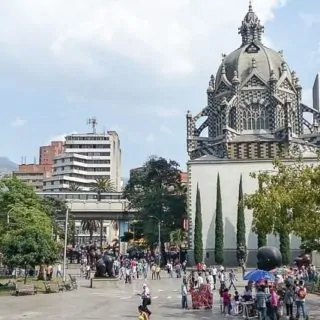
Colombia Travel Tips
Important tips and resources for planning an amazing trip to Colombia, based on my years of traveling and living in Colombia.
Tools
Colombia Trip Planning
Instructions
- Book a cheap flight to Colombia with Momondo, or better yet, start travel hacking so you can fly for free. Traveling between major cities is much better by flying, trust me.
- Plan a rough itinerary and how long you will spend at each destination. Use an itinerary planning service for custom recommendations and pick up Lonely Planet Colombia.
- Work a little every day to teach yourself Spanish, you'll want to know as much as possible before you arrive.
- Book cheap accommodation in advance, at least for the first destinations -- For hostels use: Booking, for cheap hotels use: Hotels.com, for apartments use: Airbnb.
- Reserve your on the ground tours and activities through Get Your Guide.
- Purchase travel insurance for Colombia with SafetyWing to protect yourself from illness, injury, and theft while in Colombia. VERY important. And be sure to read my article: "Is Colombia Safe?" for my honest opinion and safety tips.
- Sign up for my free emails about planning a better trip to Colombia, and be sure to check out my comprehensive guide about traveling to Colombia.
- Learn more money-saving tricks with my top budget travel tips.
- Put together your Colombia packing list.
- Enjoy this incredible country!
Notes
I hope this helped you plan your travels in Colombia! I know it can be a struggle to find accurate and on the ground information when traveling to a new place like Colombia, which is why I started writing so extensively about it!
If you have any questions about Colombia, budget travel, or anything else shoot me an email at ryan@desktodirtbag.com.
(I love getting questions! That is how I get ideas for my blog posts and what to write about!)
Recommended Products
As an Amazon Associate and member of other affiliate programs, I earn from qualifying purchases.
Share This
Did you enjoy this post about what to eat in Colombia? Please take a moment to share it on Facebook, Pinterest, or Twitter. Thanks!
Ryan
Latest posts by Ryan (see all)
- Kazakhstan Food: Exploring Some of its Most Delicious Dishes - August 7, 2023
- A Self-Guided Tour of Kennedy Space Center: 1-Day Itinerary - August 2, 2022
- Fairfield by Marriott Medellin Sabaneta: Affordable and Upscale - July 25, 2022
- One of the Coolest Places to Stay in Clarksdale MS: Travelers Hotel - June 14, 2022
- Space 220 Restaurant: Out-of-This-World Dining at Disney’s EPCOT - May 31, 2022

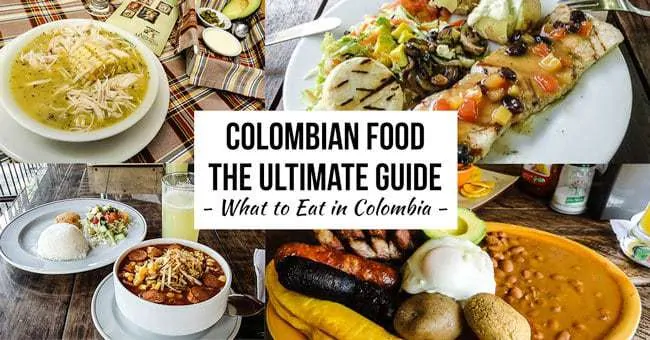
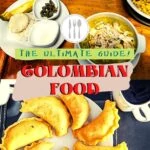
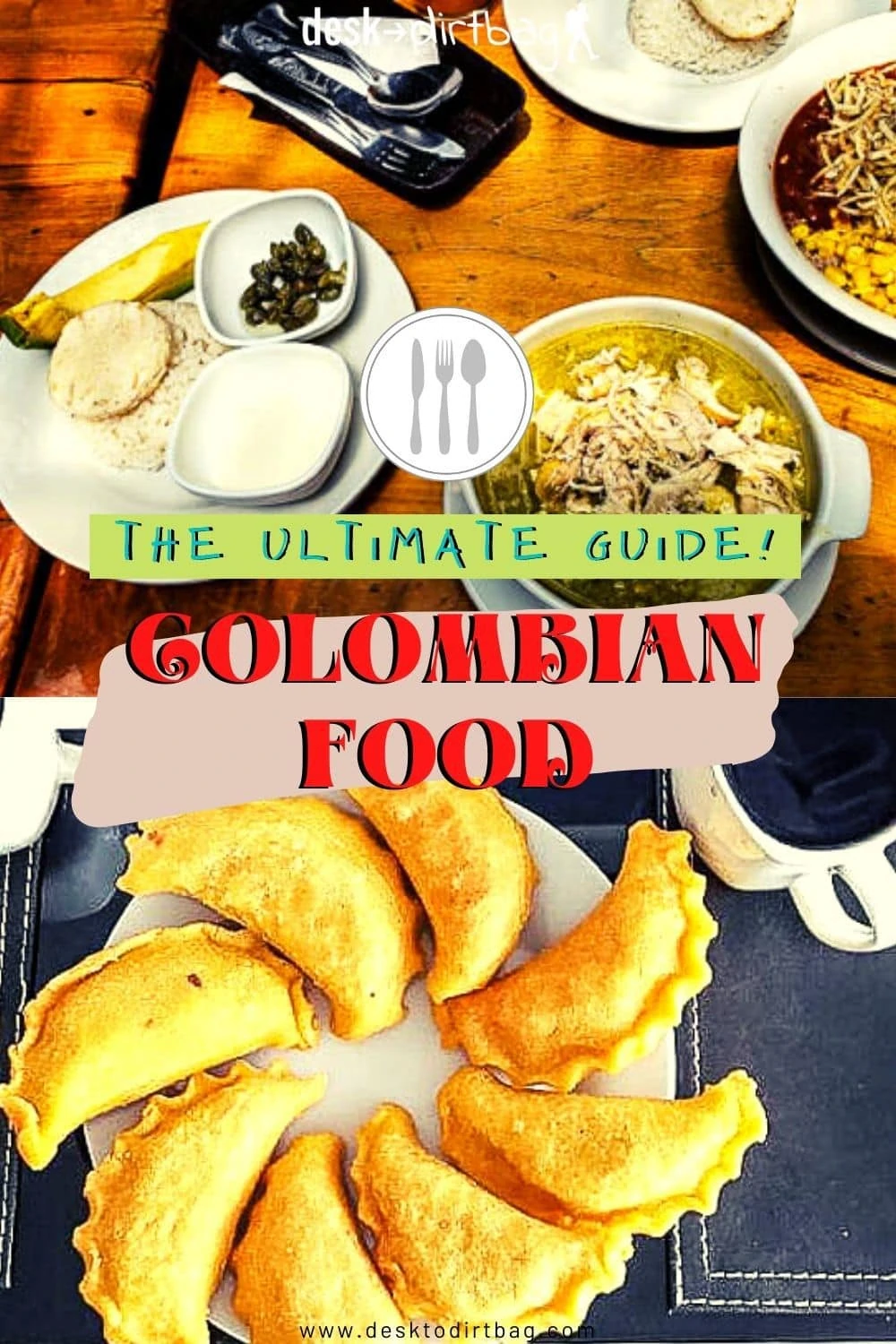
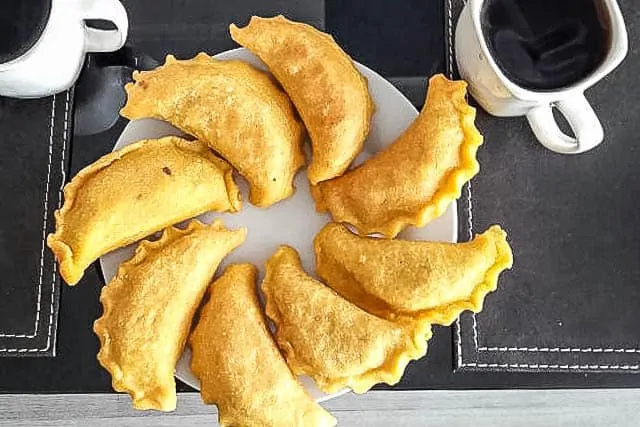
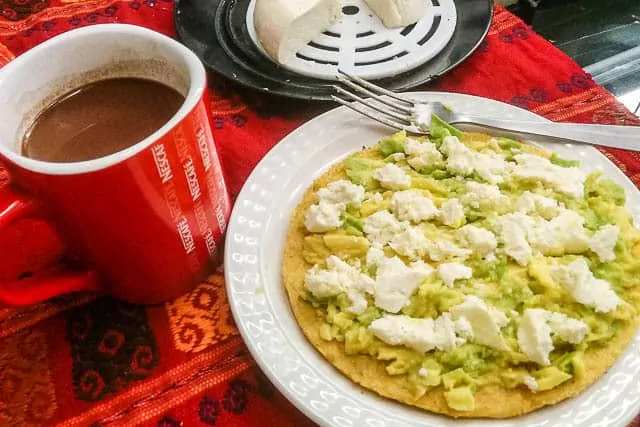
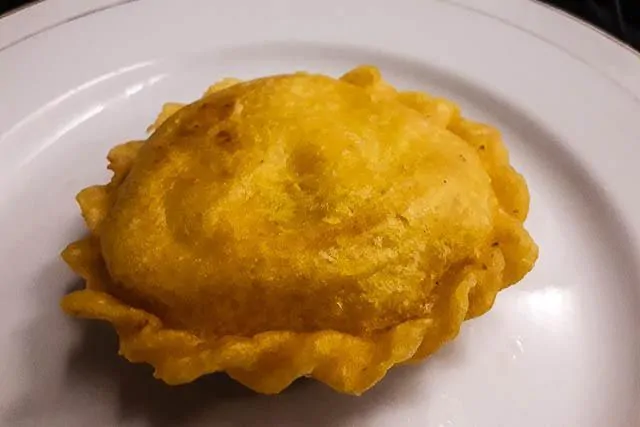
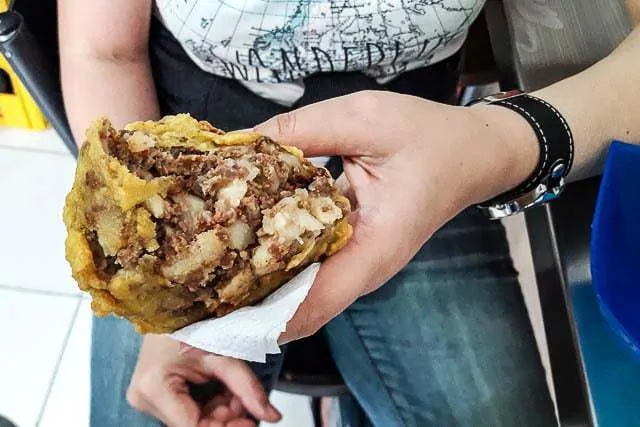
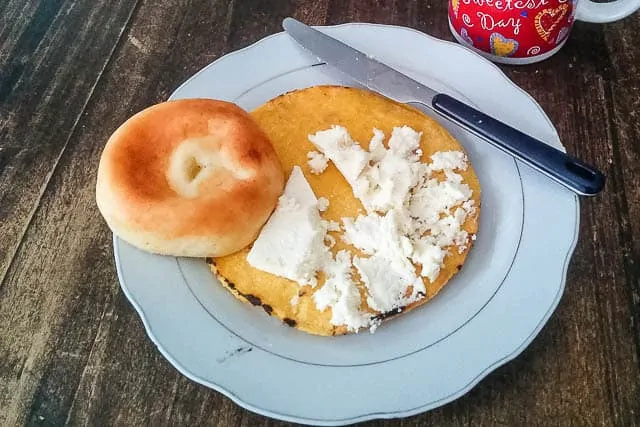
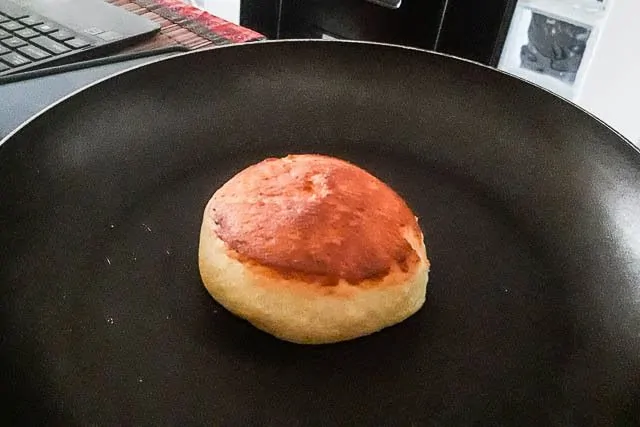
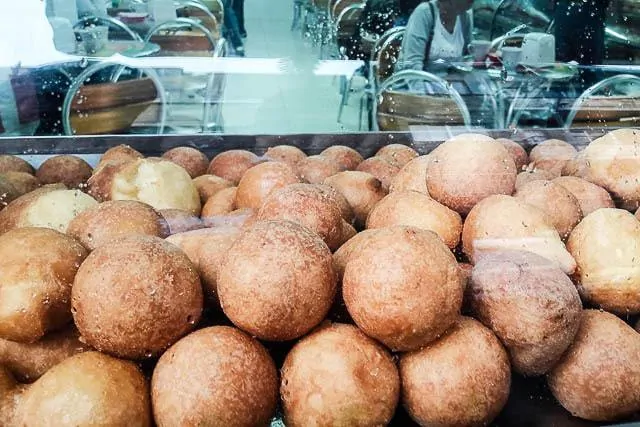
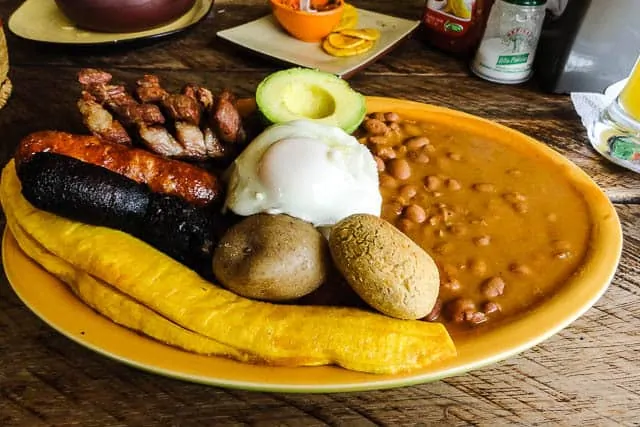
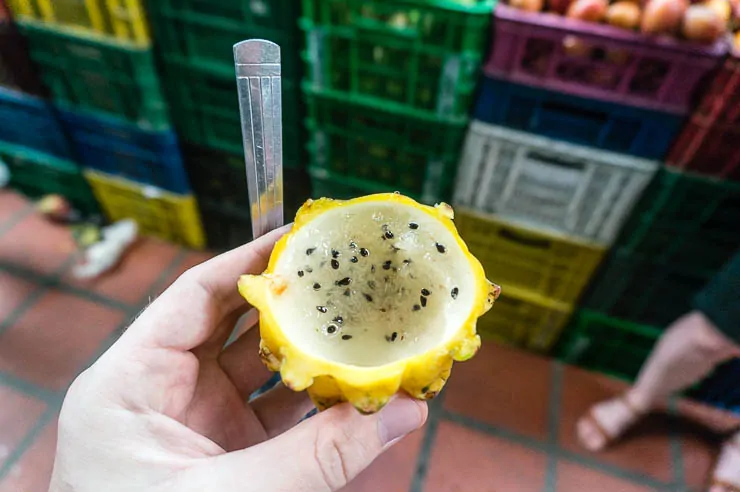
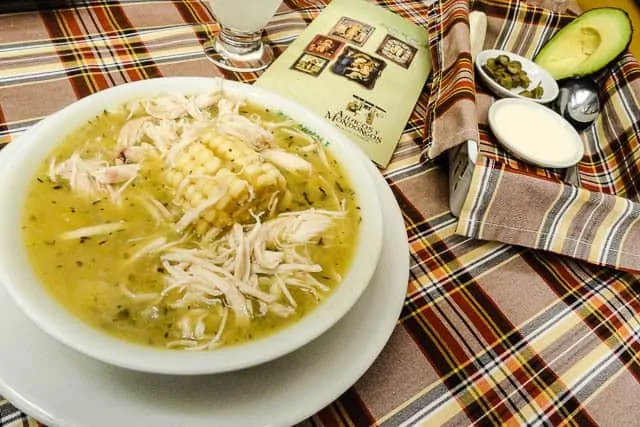
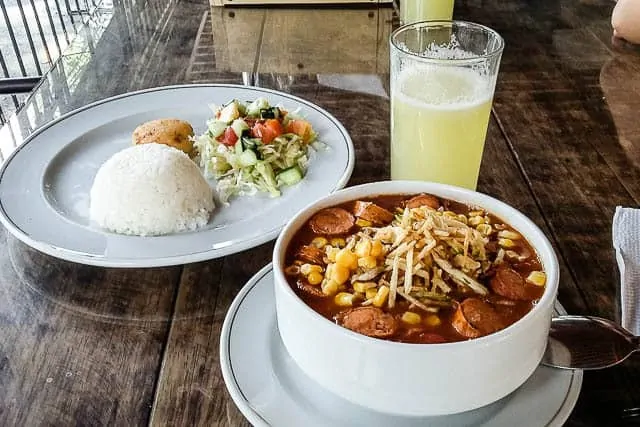
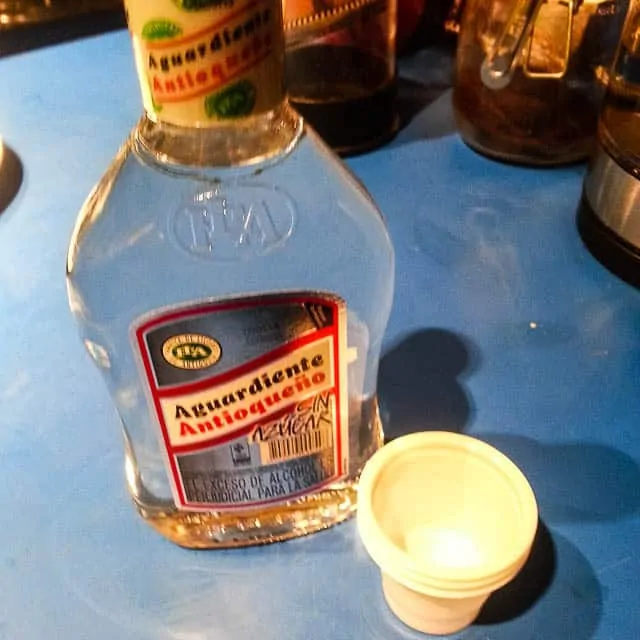
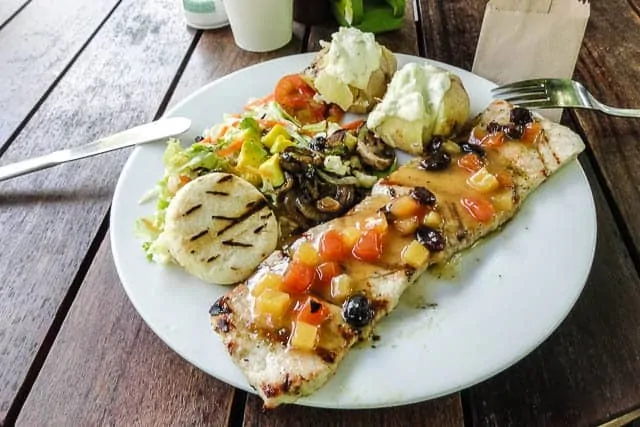
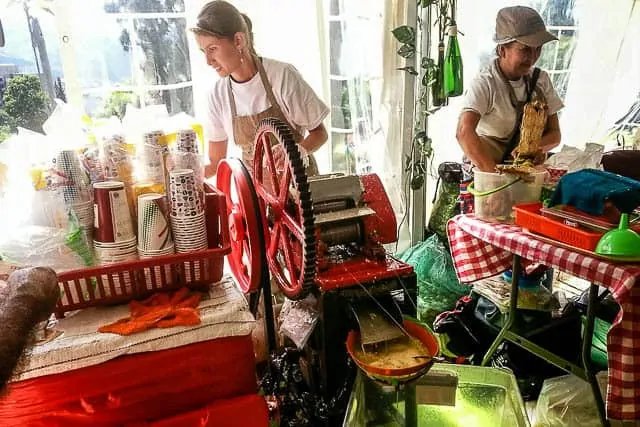
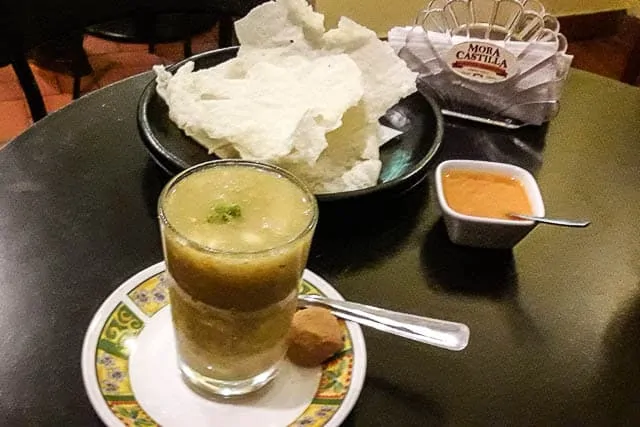
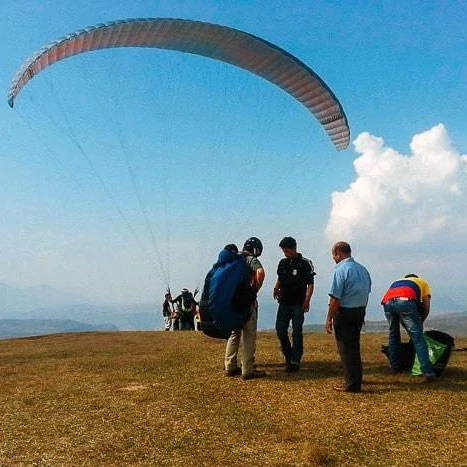
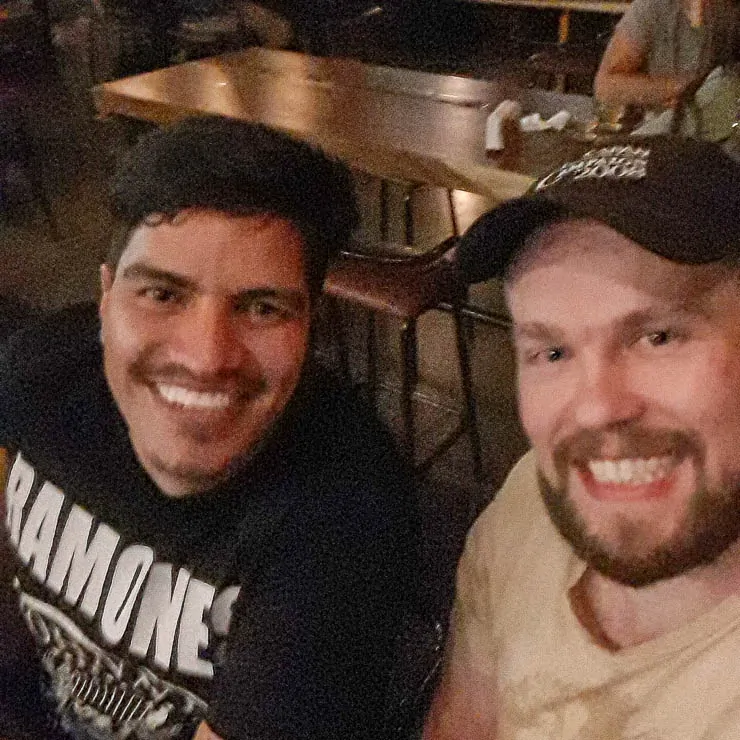
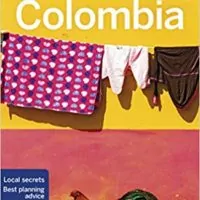
Comments 5
Colombian food is really delicious! One of the most wonderful dishes is the Bandeja Paisa because it combines different native ingredients such as the arepas and pork meat. Every traveler that visit Colombia should try this traditional dish.
Wow! This is an extensive and very thorough list; I don’t think I’ve heard of most of these dishes and can tell I’m missing out!
Author
For sure, there’s so much to explore when it comes to food, hope this provides a good starting point 😀
Whaou Mate!!!! You wrote an incredible list. There are meals I’ve never heard about it ^^. Also, there are their famous Hot Chocolat & Cheese, the Yuka and the Caldo de Pescado (The soup they always give you as a starter on the Caribbean coast).
I’m sure your guide will help lots of travelers! Good job 😉
Great guide! I haven’t been to Colombia since 1999 when it was way more dangerous. All I remember food-wise was gorging myself on empanadas!